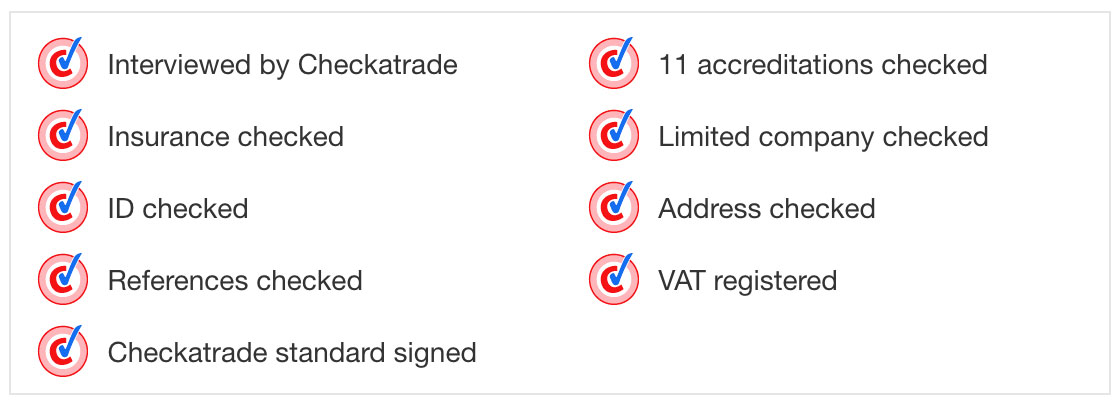Minor mishaps
- ‘Minor’ here refers to the common accidents that might occur during the course of a building project, which do not affect the overall deliverability of your extension but nevertheless need to be rectified.
- The most common examples:
- Water damage caused by leaks
- Electrical faults
- Damage to property caused from falling objects, transiting material and/or resulting from the movement of workers to and from site
- Damage caused in the handling of material (sanitary ware, kitchen appliances and such)
The best way to deal with minor mishaps is to alert the builder at the earliest opportunity and in writing. If the problem is acute, then it will need immediate attention. If not, then it is acceptable for your builder to acknowledge the fault and commit to fixing it at a later, more suitable time, so as not to disrupt the workflow.
Consequential issues
These are more serious occurrences that, if left unattended, adversely impact the overall deliverability of the extension.
Law firm Cripps Pemberton Greenish1 cites four consequential issues.
Substandard work
In addition to the protection you enjoy under the works contract, you are covered by the Consumer Rights Act 2015, whereby a contracted agreement to supply a service must be executed with reasonable skill and care. You can therefore expect the build to be to the level of craftsmanship agreed and constructed with the quality of materials expected. If either falls short, the work can be deemed substandard and could affect overall deliverability.
Escalating costs
The checks and balances written into the house extension process reduce uncertainty in the system, drastically shrinking the causes for sudden or unforeseen building costs mid-project (aside from force majeure). Regrettably, low-balling quotes to win work is a favoured tactic of the rogue trader, and once work starts, out come the extras. And these unexpected extras could very well put excessive stress on your budget and halt construction.
Delays
Your builder may have other projects running in parallel to yours, and on occasion may need to divert manpower from your job to deal with an emergency. If this happens on the odd occasion and/or for a short period of time, do not panic. However, if your project is regularly left unmanned or insufficiently resourced, this will impact the completion timetable.
Another cause of delays is the late arrival of goods and materials, which is largely out of the contractor’s hands. We witnessed, for instance, the UK starved of construction material following Brexit, and before that due to China’s insatiable appetite for the raw material fuelling its economic growth.
Incomplete work
If a delay remains open-ended without resolve, it can transmute into the fourth consequential issue of incomplete work. No further explanations required on this one, but for the avoidance of doubt: incomplete work is when the builder leaves the site without finishing the contracted schedule of work.
Substandard work, escalating costs, delays and incomplete work are the four most common issues that, if left unattended, could derail your extension. If you followed the house extension process laid out as far as practical, the risk of one of these occurring is diminished. If you do suffer the misfortune of encountering one of these issues, you will need to know how to deal with the situation.
Overcoming disputes
Whilst it’s helpful to understand the common disputes that can arise on a building project, it’s vital to know how to overcome them. This excerpt from a speech by Barak Obama in 2011, perfectly captures the tone one needs to hit when in dispute resolution:
‘It’s important to make sure that we’re talking to each other in a way that heals, not in a way that wounds.’
The four-step dispute resolution escalation ladder below sets the protocol to follow in dispute resolution. Effective dispute resolution is about taking the path of least resistance. It’s therefore best to work through the following steps in order, escalating to the next level action only if the previous one proves unsuccessful.
Note: remember to communicate in writing, preferably by email.
Step 1: Provide the opportunity to put it right
A professional builder knows they is only as good as their last client. They will want to protect their reputation by putting right what went wrong, so provide them sufficient time and space to do so. Resist any urge to call your builder out on social media – this will immediately put them on the defensive and risk creating a confrontational scenario.
If you find that the issue isn’t resolved after this step, provide written forewarning of your intention to escalate the matter.
Proceed to step 2 if the builder has still failed to respond.
Step 2: Report it to the accrediting body
Presuming you followed the suggested hiring process, your builder will be accredited with one or more reputable trade bodies. These have well-established mechanisms in place to deal with disputes, so to escalate the issue, raise a complaint and follow the dispute resolution procedure laid out by the accrediting body.
If the accrediting body has adopted an alternative dispute resolution (ADR) scheme, then all the better, as it allows for a resolution pathway that avoids the courts, instead using mediation and arbitration. Through this process, your case will be assigned a liaison officer to bridge the communication gap between you and builder.
People generally behave better when they know someone is watching, and with luck, your builder will want to limit the damage caused to their reputation within the industry amongst peers, and fear not rectifying the issue will affect future work prospects.
In the absence of an accrediting body, contact the Citizens Advice Bureau. As the builder is not beholden to the CAB, the outcome will be hit and miss, but hopefully the prospect of a third party looking in will prompt a positive response.
Step 3: Letter before action
In step 1 you demonstrated a willingness to communicate amicably, and you continued to do so through step 2 via a third party. If these have been unsuccessful, you will need to take a toothier approach. Before hiring a solicitor, however, send the builder a letter before action.
This is a formal communiqué, putting the builder on notice that court proceedings will be brought against them in the event of continued inaction. You can write the letter of action yourself, and in it offer up a final opportunity to resolve the dispute, before the matter is formally passed to (named) solicitors, who will take up the case.
By sending this letter, you are again formally ratcheting up the seriousness of the problem in an attempt to jolt the builder into action. In addition, by now you have also earnt the right to publicly call out your builder on social media.
Step 4: Legal action
By this stage, you have provided the builder with every opportunity to put things right. If you are still drawing blanks, it is time to unholster the guns. Hire a solicitor experienced in domestic construction, and pursue legal action to bring about a resolution. The solicitor will advise you on their process. But as a general rule: keep all communication in writing throughout all these steps, take photos where necessary, and chronicle interactions as they unfold.
Even the pursuit of legal action cannot guarantee a positive outcome. I must stress again that the best way to minimise the risk of falling into dispute is to hire a professional builder in the first place, using the hiring procedure previously set out.








